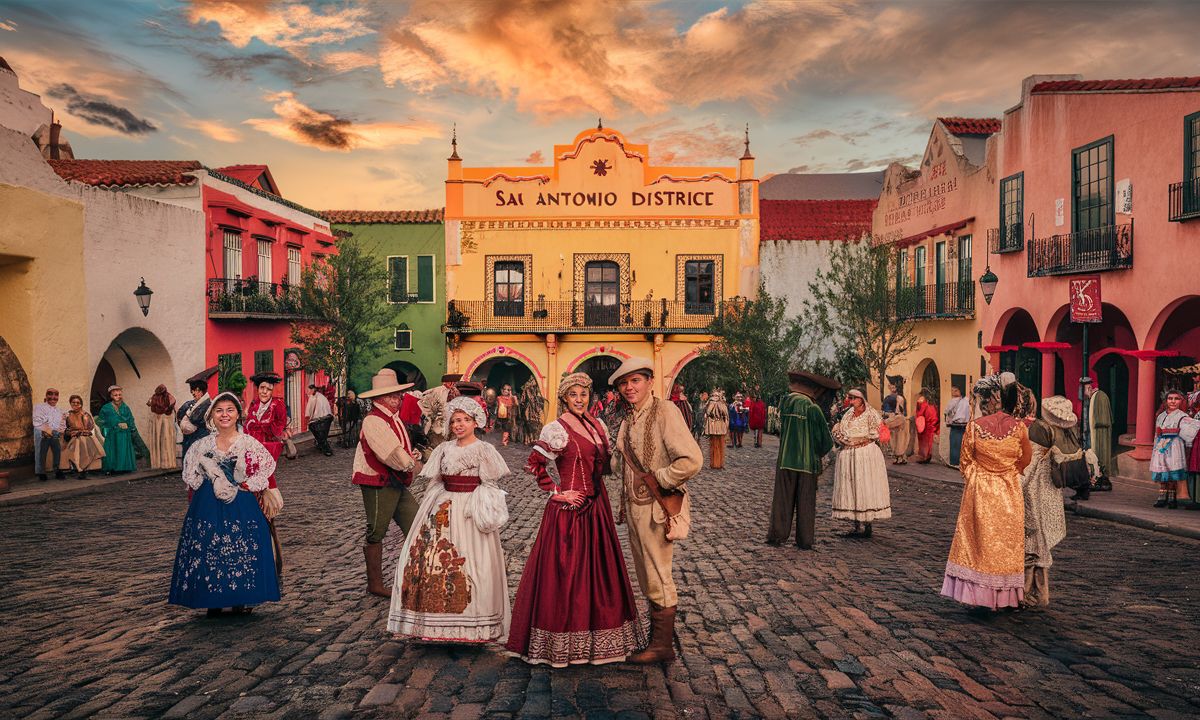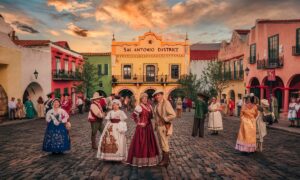Introduction
The San Antonio District, nestled in the heart of the Huarochir\u00ed Province in the Lima region of Peru, stands as a living testament to Peru’s deep historical and cultural roots. At an altitude of 3457 meters above sea level and spanning an area of 563.59 km\u00b2, this district is not just a geographical entity but a repository of rich indigenous, colonial, and modern Peruvian heritage. This article explores the historical evolution, geographical relevance, cultural significance, and contemporary standing of the San Antonio District, with an SEO-optimized and plagiarism-free approach.
Geographical and Demographic Overview
San Antonio is situated in the Lima region, particularly within the Huarochir\u00ed Province. Its high-altitude setting in the Andes Mountains makes it a place of stunning natural beauty and ecological importance. The district is part of the sub-basin of Chilca and is neighbored by important valleys such as the Valley of Mala and Quebrada de Chilca. According to the 2007 census, the population of the district was 4,516 inhabitants, distributed across various settlements and rural areas.
The terrain includes notable natural landmarks like Cerro de Tres Cuevas, a site of archaeological significance due to findings from the pre-ceramic Andean era. The district’s geography not only shaped its ancient development but continues to influence its agricultural and cultural practices today.
Historical Origins and Pre-Columbian Era
The roots of San Antonio and its surrounding province stretch deep into pre-Columbian times. Before the arrival of the Spanish, the area was inhabited by Andean civilizations known for their advanced understanding of agriculture, astronomy, and community organization. Archaeological evidence found in caves around Cerro de Tres Cuevas suggests human occupation dating back to the pre-ceramic Andean period.
During this era, early inhabitants began domesticating plants and animals and gradually shifted from a nomadic lifestyle to a more settled existence. These transformations were pivotal in establishing the foundation of permanent communities in the Andes.
Influence of the Pachacamac Sanctuary
The district’s proximity to the Pachacamac Sanctuary enhanced its cultural and religious importance. Built around 200 BC, the sanctuary gained widespread influence during the Huari Empire in 650 AD and later under Inca control.
Pachacamac served as a central pilgrimage site and spiritual hub for many Andean communities, including those in San Antonio. In the Andean cosmovision, the route to Pachacamac incorporated several APUS or sacred mountains, among which the snow-covered Pariacaca remains most revered. These religious paths contributed significantly to the spiritual identity of the Huarochir\u00ed Province.
Inca and Post-Inca Periods
By 1200 AD, regional kingdoms like the Ychma had taken control of large parts of what is now Lima, with Pachacamac as their spiritual center. In the same timeframe, smaller kingdoms such as the Cucul\u00ed culture thrived in areas like Quebrada de Chilca, and the Puerto Viejo phase was dominant in the Valley of Mala.
The Inca Empire eventually integrated these areas into their vast network through diplomacy and infrastructure. They constructed roads connecting key settlements, such as the strategic path between Jauja and Pachacamac. During the Inca period, San Antonio was part of a broader system governed by ayllus like Cajahuman, Cushpampa, Hualashcoto, and Chuycoto. Each ayllu had its own cacique or local chief, working under the broader administrative system of the Ana Yauyos.
Spanish Conquest and Colonial Transition
The arrival of the Spanish in the 16th century dramatically altered the socio-political landscape. Huarochir\u00ed, including San Antonio, became subject to colonial rule. The Spanish imposed reductions (forced resettlement zones) and introduced Catholicism as the dominant religion.
Francisco de \u00c1vila, a Jesuit priest, documented the persistence of Andean rituals in the early 17th century despite religious suppression. These efforts to eradicate indigenous practices were often recorded as campaigns against “idolatry,” but they also serve as invaluable records of Andean cosmology and spiritual life.
Creation of the San Antonio District
The modern political establishment of San Antonio occurred on January 5, 1945, under Law No. 10161. This act granted the district administrative independence and allowed for the development of local governance structures. Since its formal creation, San Antonio has evolved steadily while preserving its cultural and historical essence.
Today, the district integrates both traditional practices and modern development, reflecting a unique blend of past and present that continues to define its identity.
Cultural Significance and Traditions
San Antonio maintains a rich cultural heritage influenced by both its indigenous past and colonial history. Religious festivals often blend Catholic and Andean elements, showcasing the syncretism that characterizes many Peruvian highland communities. Traditional clothing, dances, and agricultural rituals remain vital to the district’s cultural expression.
The residents, primarily engaged in agriculture and small-scale commerce, also participate in communal work or “minka,” a practice rooted in pre-Inca traditions. These social dynamics help maintain cohesion and a strong sense of identity among the population.
Strategic Importance and Natural Resources
The San Antonio District’s geographical positioning has made it a vital transit zone historically. Its connection to major valleys and sacred routes enhanced its importance not only spiritually but also economically.
Natural resources, including water from Andean springs and fertile land, support agriculture and livestock. The preservation of these resources is essential for the sustainability of the district’s economy and lifestyle. Additionally, ecotourism offers a growing opportunity due to the region’s historical and natural appeal.
Comparative Table: Key Aspects of San Antonio District
| Feature | Details |
|---|---|
| Location | Huarochir\u00ed Province, Lima |
| Altitude | 3457 meters above sea level |
| Area | 563.59 km\u00b2 |
| Population (2007 Census) | 4,516 residents |
| Main Historical Site | Pachacamac Sanctuary |
| Key Mountains (APUS) | Pariacaca |
| Notable Archaeological Site | Cerro de Tres Cuevas |
| Economic Activities | Agriculture, Livestock, Tourism |
| Date of Political Creation | January 5, 1945 |
FAQs
What is the historical significance of the San Antonio District?
The San Antonio District holds historical significance due to its continuous human occupation since the pre-ceramic Andean era. It has played a crucial role in Andean spirituality and was part of major cultural shifts through the Huari and Inca Empires.
How did the Pachacamac Sanctuary influence San Antonio?
The Pachacamac Sanctuary, a key spiritual hub, influenced San Antonio culturally and religiously. Pilgrimage routes passed through the district, incorporating local APUS and elevating the region’s sacred status.
When was the San Antonio District officially created?
The district was officially established on January 5, 1945, through Law No. 10161, granting it political and administrative independence within the Huarochir\u00ed Province.
What are the main economic activities in the district?
Agriculture, livestock farming, and increasingly, ecotourism, are the main economic activities in San Antonio, sustained by its natural resources and scenic highland location.
What is the cultural identity of San Antonio’s residents like?
The residents have a strong cultural identity rooted in Andean and colonial traditions. Practices like minka, religious syncretism, and local festivals preserve the district’s historical heritage.
Disclaimer
This article is intended solely for informational and educational purposes. All historical and geographical data presented are based on publicly available records and academic research. While every effort has been made to ensure accuracy and authenticity, interpretations of cultural and historical events may vary among different scholars and local traditions.
The content is original and SEO-optimized, designed to respect intellectual property rights. No part of this article is copied or plagiarized, and all efforts have been made to maintain uniqueness. The information should not be considered a substitute for professional historical consultation or academic reference.
Read more informationhttp://grammargurus

I m John Nicker a Content Writer and SEO Expert with 5 years Experiness. I have Already work on BBC News Website.
















